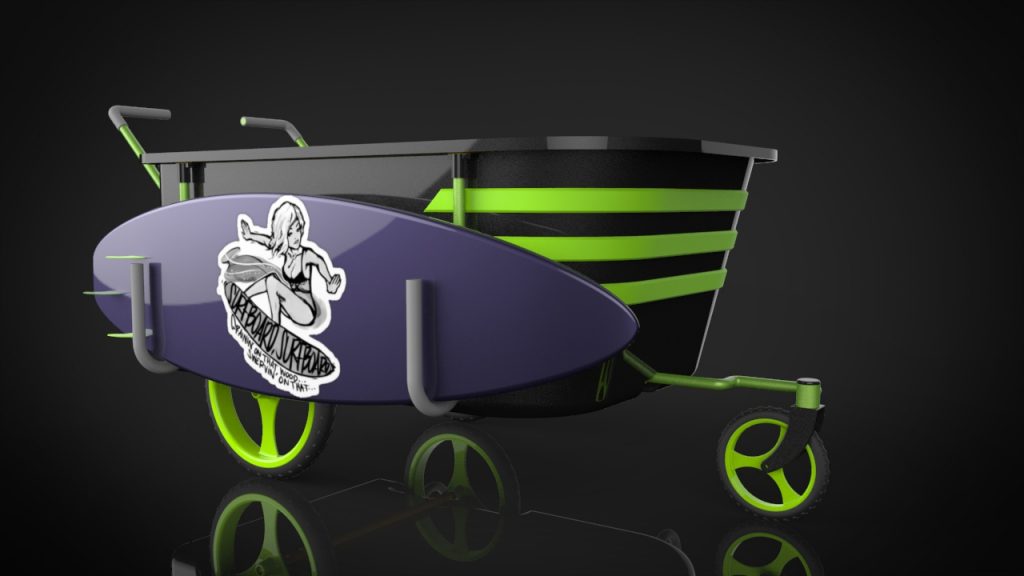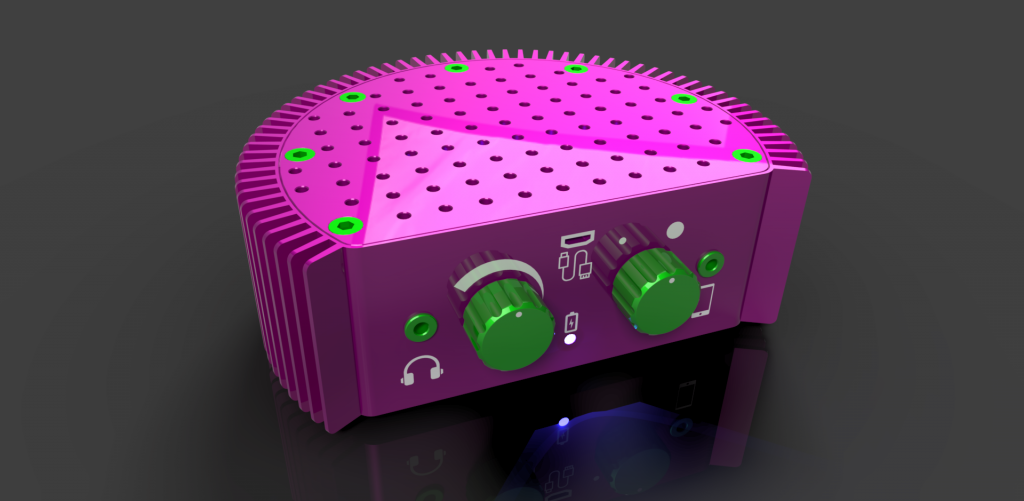It’s an exciting time to be an inventor! With crowdfunding, digital manufacturing, and modern CAD design software, there’s really never been a better time for product innovators and creative entrepreneurs. However, the unfortunate fact is that most new inventions never actually make it to market. There’s a whole variety of reasons for this. A big one is that there are a few common mistakes that new product designers often make, and avoiding them will go a long way towards helping you meet your product design goals.
1. Listen to What Your Audience is Telling You
One of the most obvious and yet most difficult things to come to terms with as an inventor is that you are not the target audience for your product. As human beings, we have a natural tendency to want to ignore opinions that contradict our own. This tendency can be especially true when you’re dealing with something you’re passionate about, like the development of your new invention.
This is something you’ve got to overcome! You need to be willing to take criticism, and to adapt your idea and your expectations to conform with the needs of your audience — even when you disagree. Especially when you disagree! The features that seem really awesome and brilliant to you might not be very important to the people you hope to be selling your invention to, and this is information that you definitely want to have before you introduce your product to market.
So the first step towards listening to your audience is asking your audience what it wants. You need to have an open dialogue with your target market from early on in the production process. Of course, this isn’t always as easy as just going out there are asking them. This is where market research comes in, and there are all kinds of different ways for you to approach getting feedback from your potential future customers. There’s focus group testing, social media outreach, trade shows, online forums, market analysis… The strategy you choose will depend upon the nature of your target market and your budget, but ideally you’ll experiment with at least a couple of these engagement pathways.
 2. Don’t Wait for Buyers to Come to You
2. Don’t Wait for Buyers to Come to You
Unfortunately, one of the common misconceptions new product designers have is that, as long as they have a patent and a prototype, they’ve done everything they need to do. The old saying is that if you build it, they will come. This is the worst saying of all time and should be expunged immediately from the English language.
When you have a great idea, as your idea surely is, it’s tempting to think that all you have to do is put that idea out into the world, and all the interest and accolades will start pouring in (along with all the money, of course). The reality is that it simply does not work this way. You need to be proactively promoting your product right from the get-go. Getting a patent and a prototype are important steps along the way for many new products, but by themselves, they won’t generate any market or investor interest in your product.
Many inventors are tempted to spend all their time perfecting a prototype. They spend years getting it just right, and then they patent it. This is not a good use of your time and energy, and it means that by the time you’re even ready to start thinking about putting your product on store shelves, the market window may already have closed.
Prototypes are meant to serve a specific function. Concept models are meant to demonstrate the idea. Functional prototypes are supposed to prove that the concept actually works. Investors and potential product licensers don’t need or expect to see highly polished, perfected prototypes, and they may or may not be overly concerned about patents. Spending all of your resources on patenting and prototyping means you won’t have anything left for market research, marketing strategy, and manufacturing costs. Plan accordingly!
3. Don’t Simply Follow Trends
There’s an important difference between responding to market demands on the one hand and blindly following trends on the other. Your product has to address a real world problem in a compelling way. If you’re always just trying to produce something that matches the current flavor of the month, you will always be one step behind. You shouldn’t be incorporating features into your product simply because they are trendy. Without proper research or strategy, these trendy features will usually come off as ad hoc and will often diminish the user experience, which of course is the opposite of what you are trying to achieve.
If you have an opportunity to intelligently take advantage of emerging trends with your product in ways that synergize well with your overall design goals, then by all means, go for it. Leveraging trends can be a great way to gain traction early on. But only if it’s something that inherently works with your product. Don’t try to stuff trendiness into your design if it doesn’t fit with your overall strategy. You’ll just end up with a clunkier, more confusing design and disappointed users.
4. Focus on Solving a Specific Problem, Don’t Overload on Features
We just talked about stuffing unnecessary trendy features into your product, and how that can lead to problems with customer experience. This is true for feature stuffing in general. When you overload your product with non-essential features, you dilute its purpose and risk turning off customers. Sometimes people don’t want a Swiss army knife — sometimes they just want a corkscrew.
Instead of trying to throw every feature you think a user might want into your design, you need to focus on the specific problem you are setting out to solve with your product, and work on solving it as efficiently and elegantly as possible. You want to be very careful and conservative when it comes to adding any kind of feature or function that goes beyond solving this specific real-world problem. Any additional features need to be backed by market research and testing — remember: you are not the target audience.
A very useful concept in the product design and development industry is the Minimum Viable Product (MVP). The Minimum Viable Product is often associated with the lean startup paradigm, but is a useful principle whether or not you are following that particular business model.
The idea of the MVP is to consider what you need your product to be in order at the most basic level in order to introduce it to early adopters in the market. That is, you’re identifying the minimum feature set that would make the product viable for at least a subset of your target market. Once you’ve developed an MVP, you can use it as a tool to generate user feedback that you can use to further develop the product and strategically introduce additional features that respond to user demand.
At the very least, thinking in terms of the minimum viable product is a useful way to guide your design decisions. Remember: you want function over features.
5. Be Prepared to Invest in the Product Design Process
This is another thing that can be hard for some inventors to hear, but it’s super important: you can’t design a new product without spending money. This is true whether you intend to license your product or bring it to market yourself. There are all manner of things you’ll need to invest in, from market research to prototyping materials to website hosting, not to mention any hiring costs you might incur. If you’re really short on cash, you might end up making hasty decisions resulting in costly mistakes.
You need to have some money put aside or a regular income sufficient to support the product development process. This is why they say that ideas are free: because inventions aren’t. Product licensing is often a great route to take for independent innovators since the capital required is less and the financial risks are lower than venturing out on your own. But companies aren’t interested in licensing your idea. What they want to see is an invention — a product. And that does cost money. It takes quite a while for an idea to become a profitable product, and it takes even longer still until you start actually seeing that profit affect your bank account.
This doesn’t mean that inventing is only for the rich — not at all! However, it means that you need to do some financial planning, and it might mean that you should hold on to your day job, at least for now. If you’re an independent product developer, you have the luxury of working at your own pace. Which means you can work on developing your idea on your off hours while earning money during the day to support the project. The design process might be slower, but, in the long run, you’re much more likely to produce a viable product that will make it to market. And that’s what you need to do if you do eventually want to ditch the day job and live off designing new products.
At Cad Crowd, we fully believe in independent product innovators and inventors. Often the best ideas come from creative individuals and entrepreneurs, and we want to support them! We set out to offer a complete range of flexible product design, contract manufacturing, and USPTO patenting services, providing entrepreneurs with a one-stop-shop for all their product development needs. We connect you with expert freelance CAD designers for everything from industrial design to packaging.
With services custom tailored to the specific needs of your project without the overhead costs of conventional design firms, we help you hit your project goals on time and on budget. Get a free quote today, and tell us about your new product!
